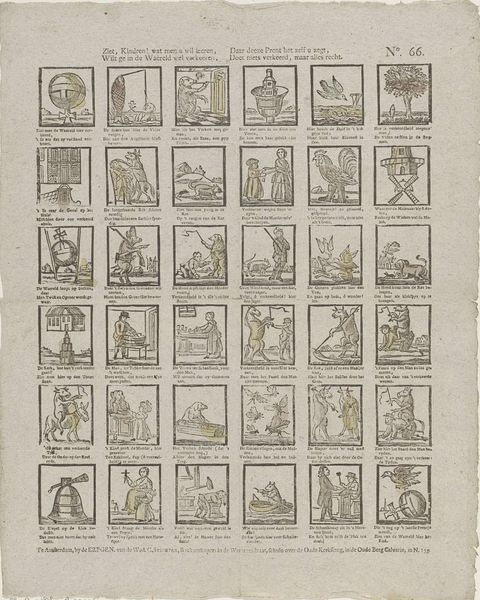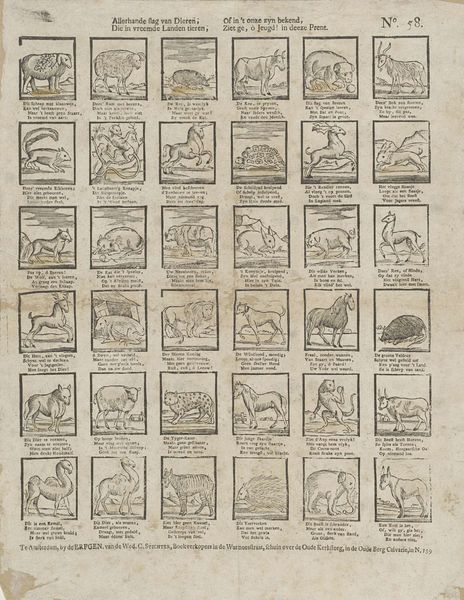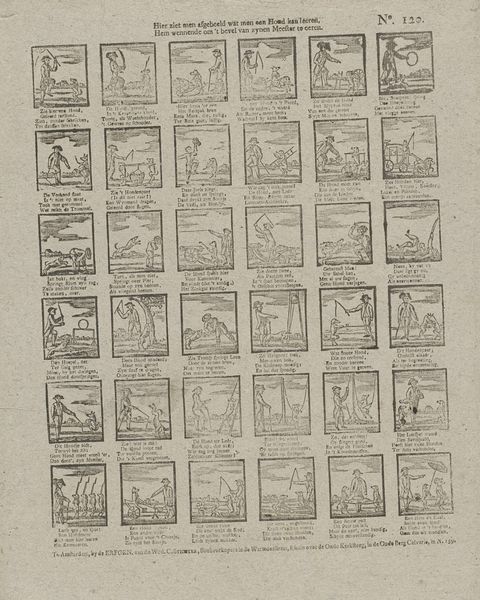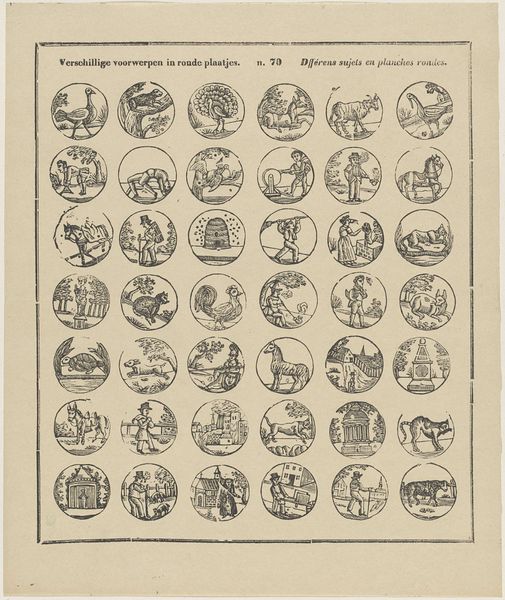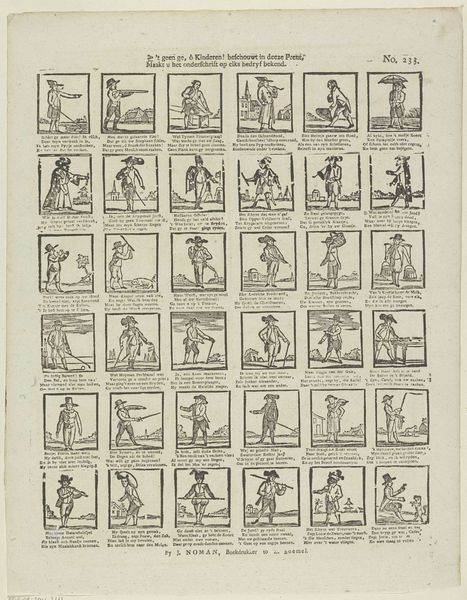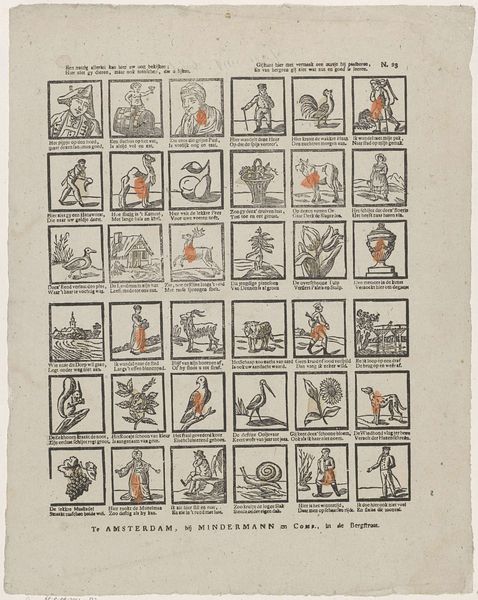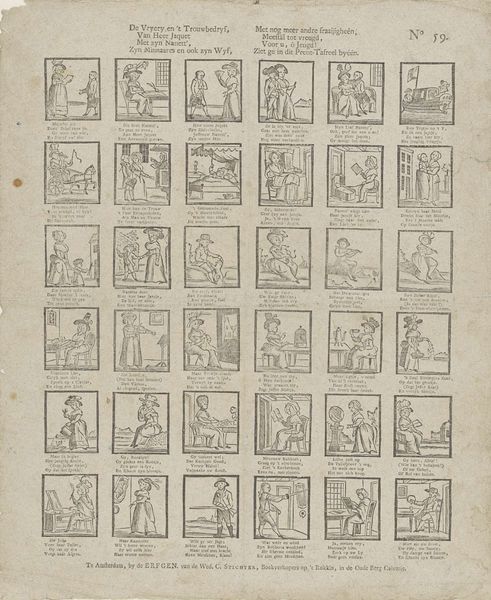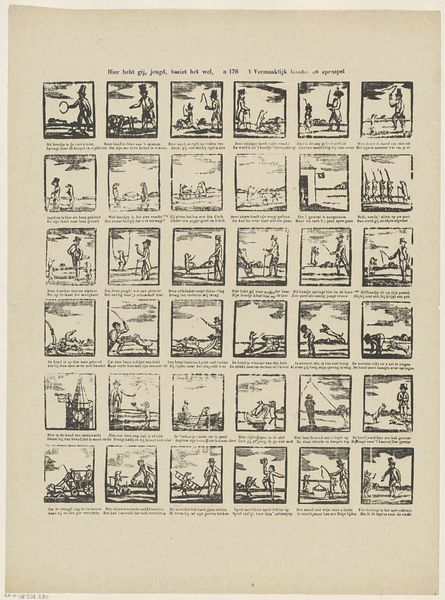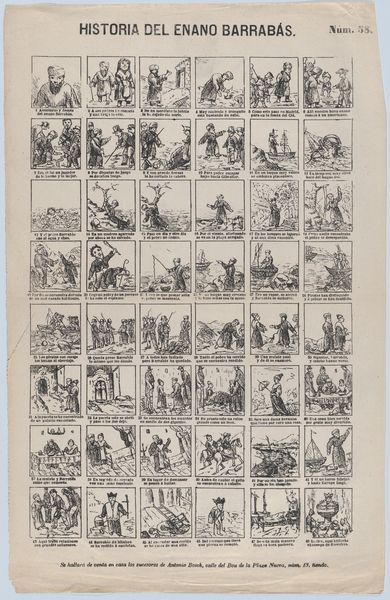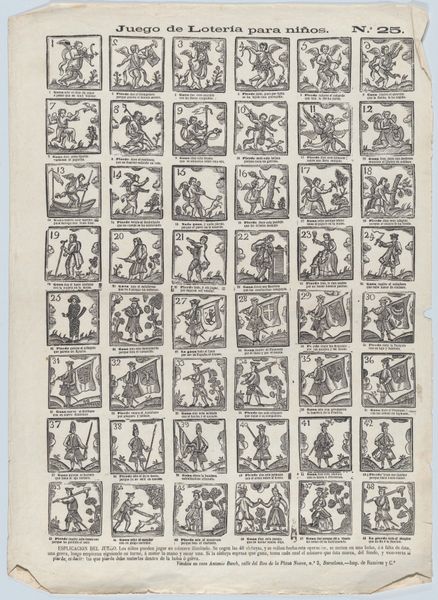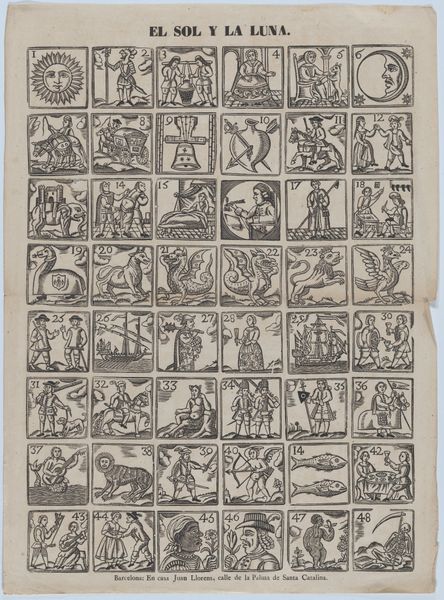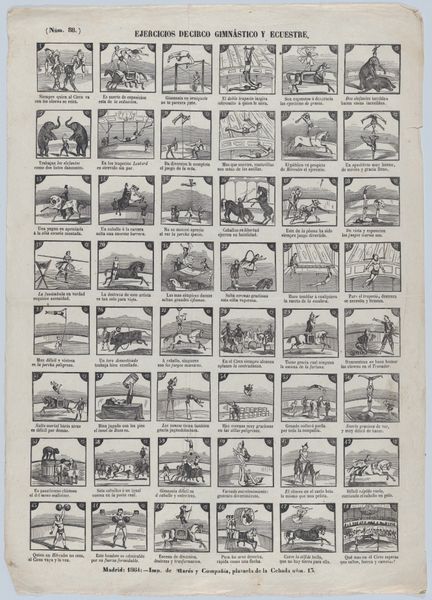
Allerhande slag van dieren, / Die in vreemde landen tieren, / Of in 't onze zyn bekend, / Ziet ge, ô jeugd! in deeze prent 1806 - 1830
0:00
0:00
graphic-art, print, engraving
#
graphic-art
#
comic strip sketch
#
narrative-art
#
animal
#
dutch-golden-age
# print
#
old engraving style
#
engraving
Dimensions: height 395 mm, width 316 mm
Copyright: Rijks Museum: Open Domain
Curator: Immediately, I’m struck by the graphic simplicity and density of this print. So many animals packed onto one page. It almost feels like a naturalist’s sketchbook, but with a more formal arrangement. Editor: Indeed. Let's take a closer look at this engraving; the Dutch title translates roughly to “All sorts of animals, / That rage in strange countries, / Or are known in our own, / See, o youth! in this print." It’s from sometime between 1806 and 1830, by Johan Noman. Prints like these were designed to teach. Curator: Educationally oriented perhaps, yet formally delightful in its arrangement. Each creature exists within its own neat little frame, complete with verse! The visual rhyme created by this grid, paired with the contrasting textures of each animal, engages the eye. Editor: It absolutely reflects the colonial gaze popular during the period, one eager to display the known and imagined wonders from around the globe. The animal images derive from various popular and scientific publications of the day. Curator: Consider also the line quality. The engraver clearly sought precision but allowed for some freedom; note the fur textures on the bear or the scaled hide of what appears to be an armadillo. The print provides texture through controlled variance of line. Editor: The verse beneath each animal tells a small moralistic story, common to children’s primers of the era. It would be interesting to see if they reinforced or challenged the era’s attitudes toward nature and foreign lands. I would surmise, it’s about controlling both domestic and foreign "animals," figuratively and literally. Curator: I am compelled by the interplay of rational organization and near-fanciful depiction. It feels suspended between objective cataloging and artistic play. The image possesses scientific undertones blended with a decorative nature. Editor: Well, both approaches are valuable here. It provides insight into pedagogical tools while still providing a view into this period’s views toward science, art, and world views. Curator: Yes, the animal’s physical presence and representation here reveal 19th-century visual culture, and also provide a captivating picture.
Comments
No comments
Be the first to comment and join the conversation on the ultimate creative platform.
